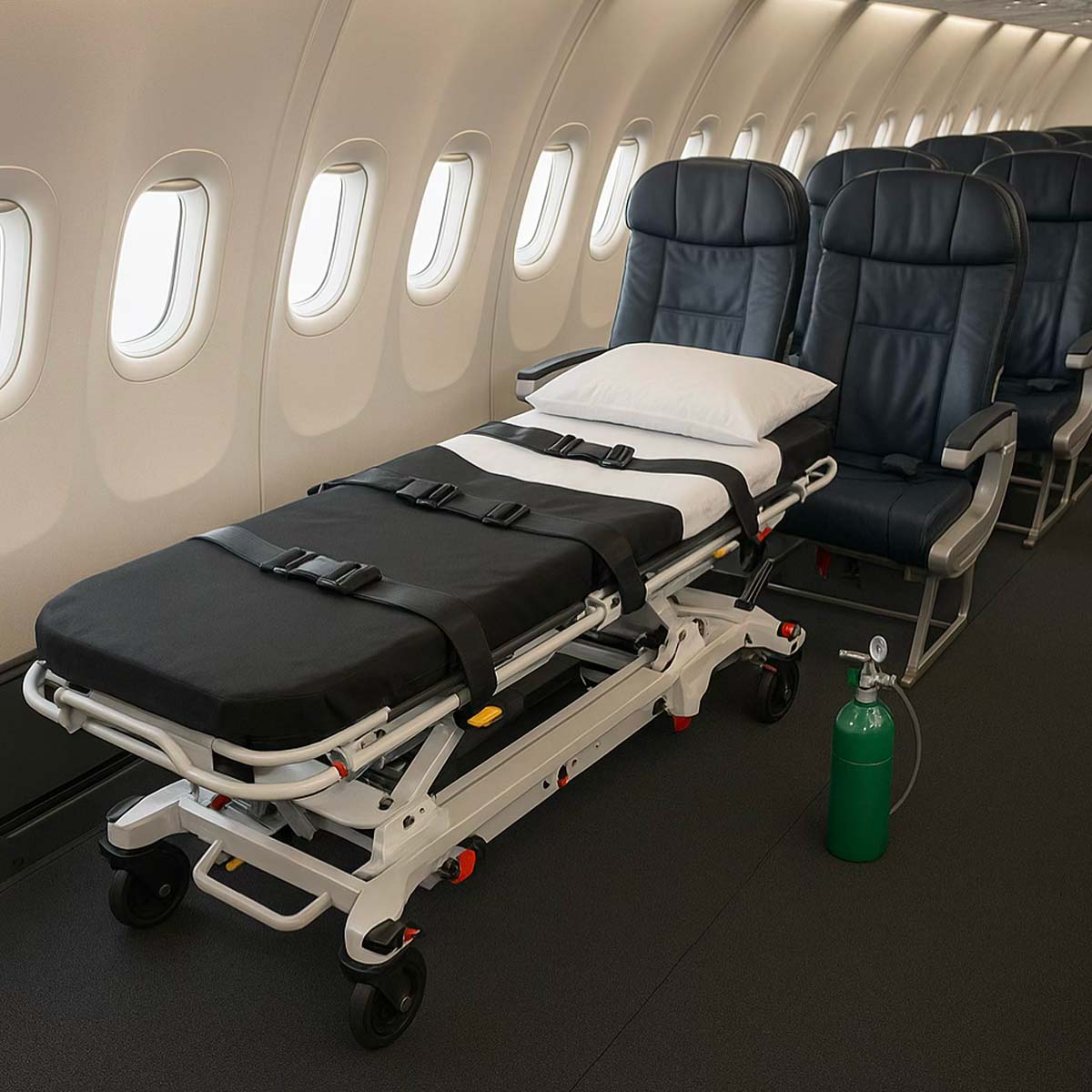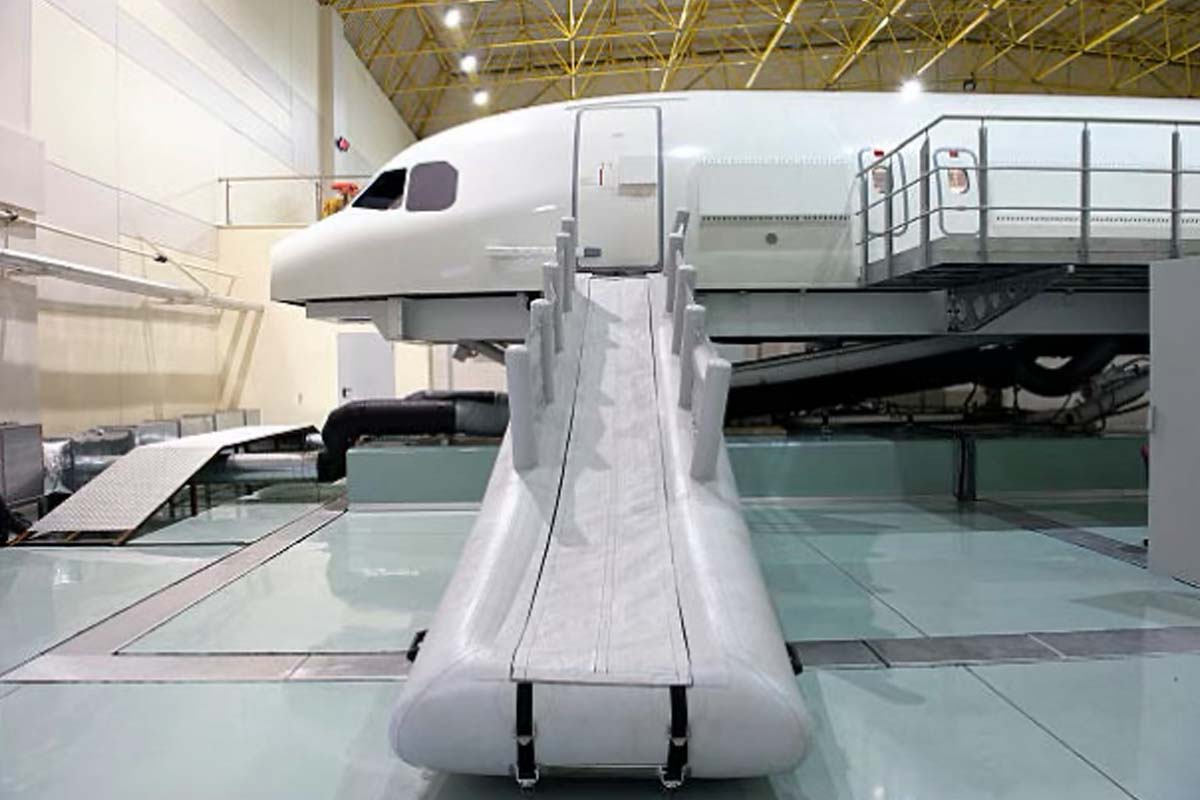

In the aeronautics industry, gas supplies must meet safety and performance requirements. It is essential to ensure the continuous and controlled availability of oxygen and nitrogen, two essential technical gases, both on board and on the ground.
Novair offers an on-site gas production solution to meet the oxygen and nitrogen needs of the aeronautics sector in an autonomous, reliable and efficient manner.

The generator, coupled with a high-pressure bottle filling system, allows for an autonomous supply of oxygen bottles used on board aircraft.

An oxygen generator uses an air separation process. Ambient air, composed mainly of nitrogen (71%) and oxygen (21%), is first compressed and filtered before being passed through molecular sieves. These retain the nitrogen and allow the recovery of a flow of oxygen that is up to 95% pure.
The result of NOVAIR's R&D, DS-PSA (Double Step Pressure Swing Adsorption) technology is based on a patented dual-stage adsorption process. DS-PSA removes nitrogen, argon, and traces of pollutants remaining after the first stage. This technology achieves the highest levels of oxygen purity, up to 99.5%.
The Oxypure DS-PSA oxygen generator incorporates this technology, specially designed to meet the most demanding needs. It also features an exclusive OCS (Oxygen Concentration Stabilizer) device, which guarantees perfect stability of oxygen flow and concentration, whatever the demand.
Ionic technology is the result of decades of research conducted in collaboration with NASA. Using a next-generation ceramic membrane, ionic technology converts molecular oxygen into ionized oxygen atoms using an electrochemical process. Upon contact with the membrane, the oxygen atoms are attracted to the front of a ceramic crystal designed to allow only oxygen ions to pass through. A low DC voltage is applied to ionize the oxygen molecules, forcing the ions to migrate through the crystal. They then exit the back of the ceramic membrane and are immediately recombined into oxygen molecules.
Novair's ION is the world's first ionic oxygen generator, developed in collaboration with NASA. ION operates without compressors, consumables, or maintenance, making it a completely revolutionary solution that is compact, quiet, and extremely reliable. It achieves purity levels between 99.99% and 99.9999%. ION is designed to meet the requirements of various industrial sectors requiring a reliable supply of ultrapure oxygen.
To meet these needs, Novair manufactures high-purity nitrogen generators, suitable for the most demanding sectors in terms of gas quality.

A nitrogen generator uses a simple process of separating air by isolating other components from the atmosphere. There are two types of technologies: the PSA (Pressure Swing Adsorption) nitrogen generator and the membrane nitrogen generator.
PSA (Pressure Swing Adsorption) technology is based on a process of separating gases from ambient air through alternating pressurization. The air is compressed and directed into a tank containing molecular sieves that retain unwanted gases, while allowing nitrogen to pass through. The system uses two tanks that alternate their adsorption and regeneration phases, allowing continuous production of pure nitrogen. This automated process guarantees a reliable, uninterrupted supply.
Membrane technology separates air components using a bundle of hollow fibers. When air passes through these fibers, the nitrogen remains trapped in the membrane while the other gases escape. The nitrogen is then recovered at the generator outlet. Thanks to the very large quantity of fibers present, it is possible to quickly treat large volumes of air.
In the aerospace sector, on-site gas production is an effective solution for ensuring a continuous supply without the constraints and risks associated with logistics.
By producing gas directly on-site, the aerospace industry benefits from reduced costs and improved safety, while meeting industry requirements.